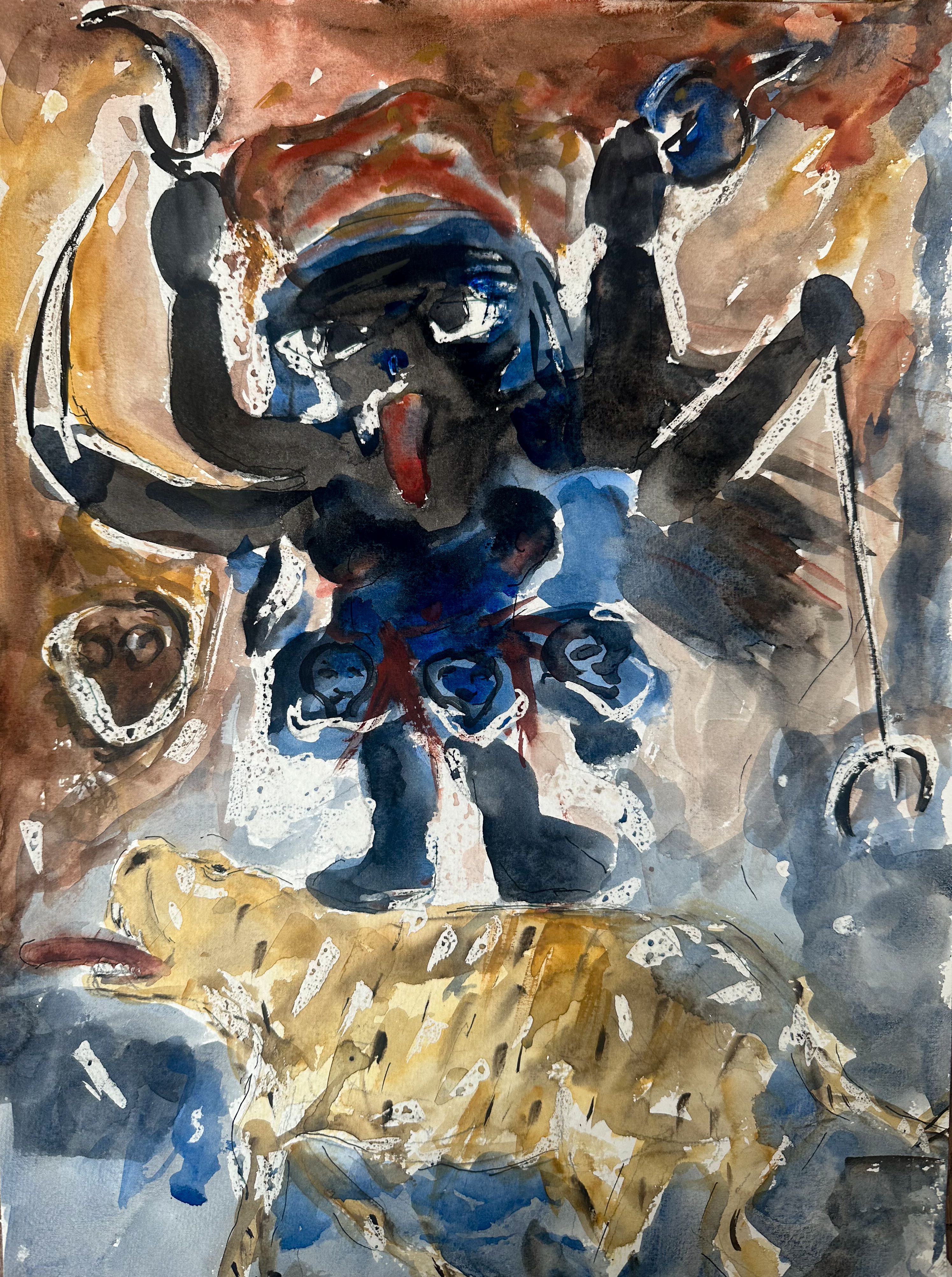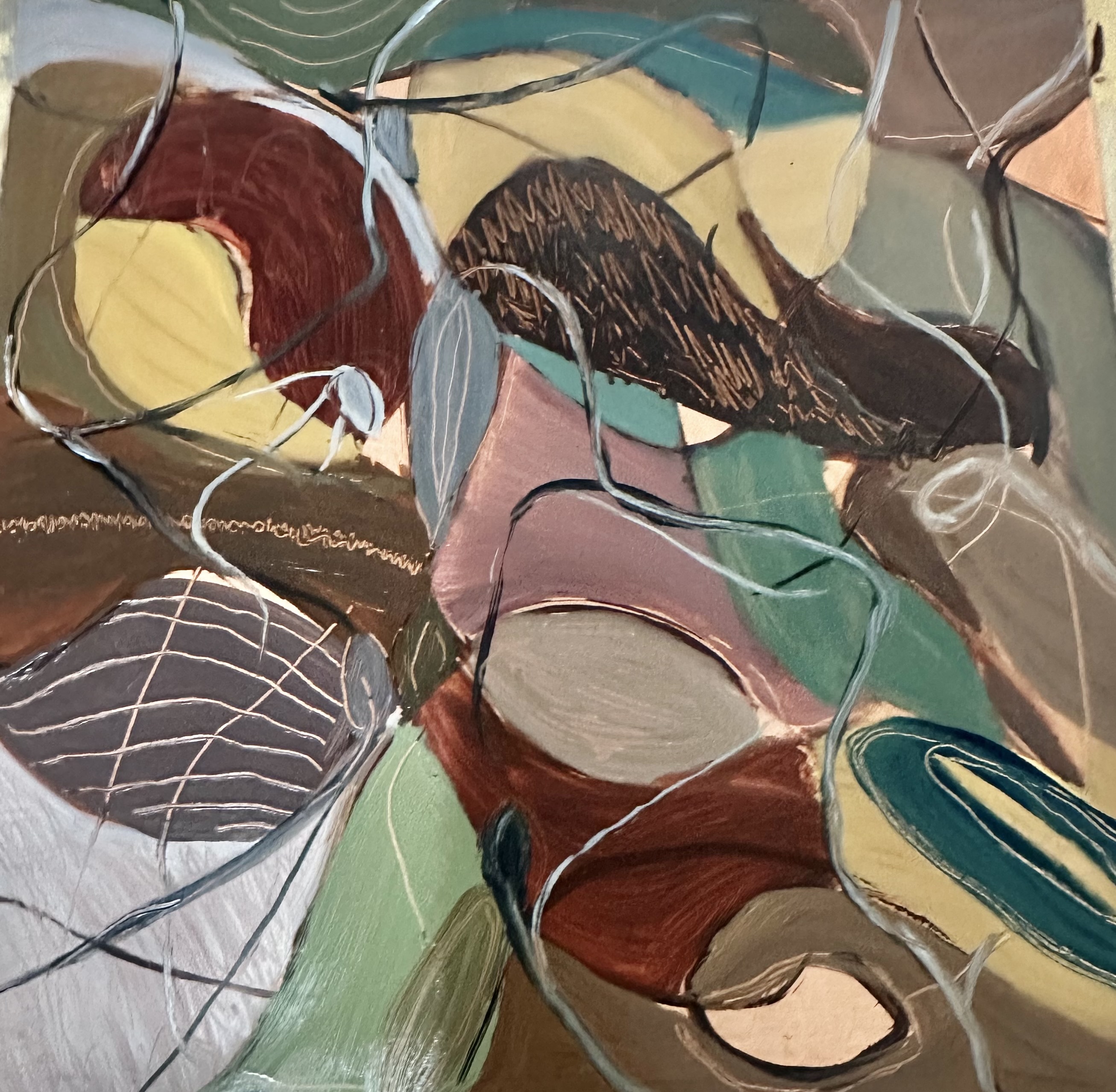The Roar of the Divine Feminine- The Goddess Within

Goddess Kali, Watercolour drawing, 2024 , Varsha Manglam
The Durga Saptashati, a sacred text from the Vedas found in Markandeya Purana is an extraordinary reverence to the feminine. The text speaks of the divine feminine in a way that resonates deeply with the modern women. It proclaims that Durga, the fierce and powerful goddess, is present in every woman, residing as the ‘inner shakti’ that is the inherent strength and potential that lies dormant within. This text serves as a powerful tool for connecting with this inner power, reminding us that we possess the strength to overcome any obstacle, just as Durga vanquished the demon Mahishasura.
The text emphasizes that Durga is not just an external deity, but a reflection of the divine feminine within each woman. This concept empowers us to recognize our own strength, resilience, and capacity for greatness. It encourages us to embrace our femininity as a source of immense power and potential.
The text also emphasizes the importance of inner purification, to cleanse ourselves of negativity, both internal and external. This cleansing process, through practices like meditation, self-reflection, and acts of kindness, allows the inner shakti to shine brighter and manifest its full potential
The story of Durga's victory over Mahishasura is a powerful allegory for the battles we face in our own lives. The demon Mahishasura represents the negativity, fear, and injustice that we encounter. Durga, embodying the divine feminine, gathers the strength of all the gods and goddesses – symbolizing the power of unity and collective action – to vanquish the demon. This story reminds us that that by tapping into our inner strength and working together, we can overcome even the most challenging obstacles.
.The story goes beyond the battlefield, however. It also emphasizes the nurturing and compassionate aspects of the divine feminine. Durga, while fierce, is also a loving mother and protector. This duality reminds us that true strength lies in the ability to be both compassionate and assertive, to nurture and protect, while also standing up for what is right.
March 21, 2024
Aranyani – The Goddess of the forest

Untitled, oil paint on copper, 2024, Varsha Manglam
Aranyani – The Goddess of the forestAranyani (Sanskrit: अरण्यानि, romanized: Araṇyānī, meaning. 'forest') is the goddess of forests and the wild animals that dwell within them. The below poem is written as a reverence to the forest and environment.
In the heart of the forest, where the trees stretch high
Where wildflowers bloom with graceful ease
The forest goddess Aranyani reigns
Her hair, a cascade of midnight black
With leaves of jade
Her eyes, shining bright, with a gentle light
Her voice, a melody of the wind
Whispers secrets, only the trees can find
Her touch, so healing, bringing life
Her roots delve deep, into the earth's embrace
Basking in the sunshine, and the rain's grace
She nourishes the creatures, which call her home
Atharva Veda and the environment

Atharva Veda
Shiva and Shakti
Oil on copper,2024 by Varsha Manglam
The painting expresses the unifying energy of Shiva and Shakti that exists in all things and is present everywhere in daily life. It could be referred as an inner energy and power that everyone possesses. This energy can be enriched and developed by daily practice of concentration and meditation.
The Gods of Indian mythology are often depicted with their consorts who are the source of the primordial energy. It symbolically represents the union of shakti (the female principle, the activating power and energy) and Shiva (the male principle, symbolises consciousness). The painting above depicts Shiva and shakti as two snakes coiled together, symbolises the process of union of the masculine and feminine to form all that exists.
Central to Vedic philosophy is the belief that the universe is created and governed by a formless supreme power i.e. Nirguna and Nirankar, which is present in all living beings and non-living things to connect with the formless supreme power. The Vedas envisaged its manifestations in the form of a number of divine images